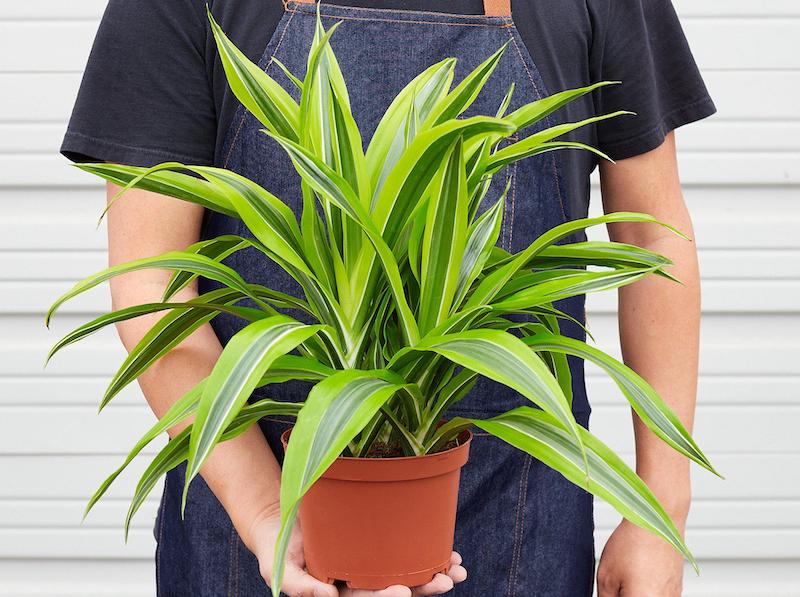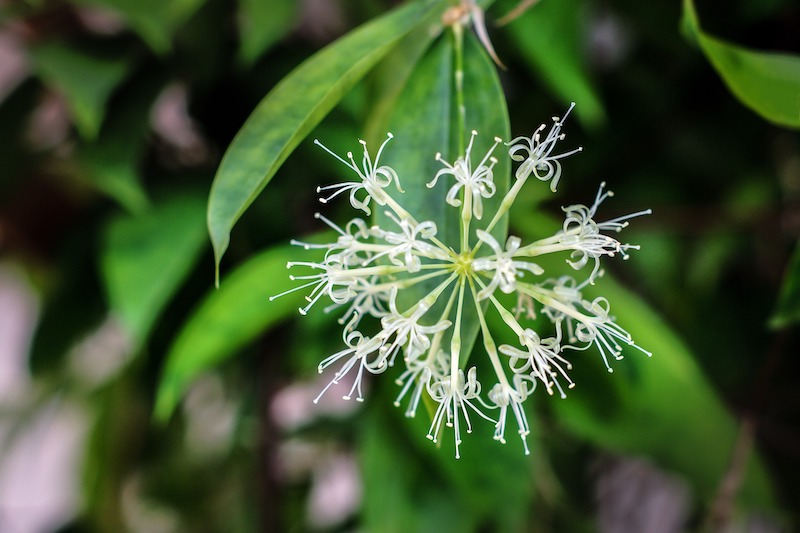Native to various tropical regions, including Asia and Africa, Dracaena enjoys warm, humid weather. Your Dracaena will appreciate spending its spring and summer months outdoors to soak up the fresh air and water, warm temperatures, high humidity, and ample sunlight. Ideally, Dracaena prefers temperatures of 70 to 80 degrees; 60 to 80 percent humidity; and bright indirect sunlight. So? From roughly May to September, your Dracaena can take an outdoor vacation and will thank you for it.

When To Put Dracaena Outside
Are you considering moving Dracaena outside for the spring and summer? Move Dracaena from indoors to outdoors after the last frost date. While this herbaceous perennial can tolerate temperatures as low as 50 degrees, waiting until after the last threat of frost will prevent Dracaena from experiencing cold stress. The key to making a successful move outside is to gradually transition Dracaena from its current conditions to the new ones outdoors while continuously checking for signs of cold stress, including wilting, curling, and discolored leaves. Identifying any of these symptoms means it’s still too cold outdoors, and you should move Dracaena indoors. A gradual transition consists of taking Dracaena out for short periods and gradually increasing these periods until Dracaena tolerates being outdoors for the duration. Start exposing Dracaena one hour a day in a spot with bright indirect light, such as a porch or covered patio.
When To Bring Dracaena Indoors
Before fall’s first threat of frost, consider transitioning Dracaena back indoors. Dracaena does not do well in temperatures below 50 degrees F. The process of moving Dracaena back inside is no different from the method you used to transition it outside in the spring or summer; you want to expose it to its new indoor environment in small, gradually increasing doses. Transition it over 1-2 weeks until it can finally tolerate its new indoor environment for the long term. Indoors, maintain the temperature at 70 to 80 degrees and the humidity at 60 to 80 percent. Also, ensure ample bright indirect sunlight will be available to Dracaena. If you are having issues maintaining high humidity, use a humidifier or pebble tray, or place Dracaena alongside a group of other plants rather than alone. These techniques should help increase the humidity.
When transitioning Dracaena back inside, pests are another concern; don’t allow insects such as mealy bugs, scales, and mites to move indoors with Dracaena. Properly prepare Dracaena by trimming any dead/damaged foliage. Second, spray the plant’s foliage thoroughly with water, and finally, use insecticidal soap to treat it. Once you bring it indoors, do not place it near your other plants for two weeks or so. This quarantine period will help prevent any unwanted friends from claiming your other plants as their new homes.

Caring For Dracaena Outdoors
Dracaena will enjoy vacationing outdoors in the spring and summer, when the conditions appeal to its tropical roots. To ensure that it has the most fun, place Dracaena in partial sun, such as under covered patios and porches. Prevent heat stress by using light-colored pots that don’t trap or absorb heat. A terracotta pot is an ideal container to use.
After moving Dracaena outdoors, pay attention to the weather. While Dracaena does not require a lot of moisture, ensure it gets enough water. If Mother Nature fails to provide for a few weeks and Dracaena’s top one to two inches of soil are dry, give it a drink. Conversely, if Mother Nature delivers concurrent downpours, check Dracaena’s drainage to ensure water is moving through the pot; Dracaena does not tolerate soggy soil. Finally, during adverse weather, cover this perennial with pots, buckets, bowls, or plastic until the danger has passed. Treat pest problems like mealybugs, mites, and scales with horticultural oil or insecticidal soap.
 |
Author Suellen Barnes - Published 4-07-2023 |
